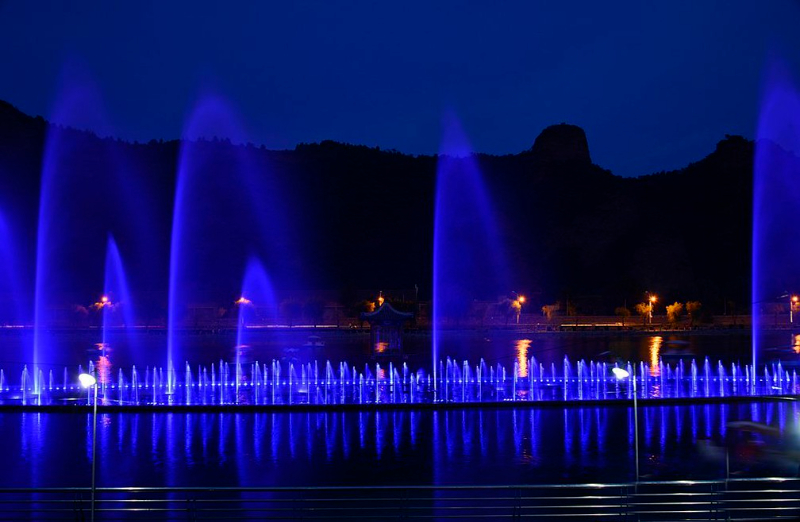As a beautiful scenery, large-scale musical fountains appear more and more in people's field of vision, enriching the business life culture of the city. How is the music fountain designed?
Designing a fountain involves several steps, including:
Need to consider where the fountain will be built:
The location of the music fountain is different, the choice of water type, lighting collocation, and sound configuration are all different. In pedestrian streets, community gardens and other occasions, try to choose shapes with a relatively low height and a controllable water drop point, such as jellyfish, cedar, springs, dandelions, etc. Projects requiring human-water interaction must fully consider water pressure factors to prevent personal injury risks due to excessive water pressure and accidents. For those fountain landscapes built in rivers and lakes, due to the distance from the audience, try to choose some thick and tall water styles to reflect the power and momentum of water. For example, 100-meter high spray, Optimus pillar and so on. Understand the local climate and environmental factors.

Creating a concept and plan:
Sketch out a rough design and layout of the fountain, including the placement of the water feature, landscaping, and lighting.
Choosing materials:
Select materials that are durable and suitable for the intended location, such as pump and tubing and water filter.
Effect, height, pipe distance, nature of fittings and valves will determine the size of pump required.
Larger fountains typically use centrifugal turbines or overflow-end pumps, while cheaper, easier-to-install submersible pumps are specified for smaller effects.
Water clarity is important to a fountain, so choosing a filter is essential. Most fountains use a small circulation pump and a sand filter with a skimmer or floor drain that returns water to the filter.
Need to define fountains:
Fountains are controlled by a system that regulates the flow of water and controls the various features of the fountain, such as jets, lights, and mist. This system typically includes a pump, valves, and controls. The pump is used to circulate the water through the fountain, while the valves are used to control the flow and direction of the water. In addition to these basic components, a fountain control system may also include sensors, timers, and other devices to monitor and regulate the fountain's performance.
Finalize the design: Refine the design and make any necessary changes.
Install the fountain: Hire a professional to install the fountain, ensuring that all necessary permits and approvals have been obtained.
Maintain the fountain: Regular maintenance is necessary to keep the fountain running smoothly and to ensure that it remains in good condition.
It is also important to consider factors such as water flow, water filtration, and electrical requirements when designing a fountain. It is always best to consult professionals in this field for a fountain design which is both beautiful and functional.
Excellent fountain engineering design is the result of comprehensive consideration of various realistic factors such as water, lighting, electricity, cost, dance, music, etc., and is the basis for constructing fountains. Beijing Dalisi Landscape Engineering Co., Ltd. has a professional fountain design team, including hydropower designers, lighting designers, animation designers, art directors, etc., and is committed to creating professional fountain designs for customers. Contact us now to design your exclusive fountain.
Top-level and Tailored Design Offers You the Exclusive Design
Tel: +86 135 2226 3741
E-mail: dalisi@dlsfountain.com
Fax: +86 135 2226 3741
Add.: Room. 1318, Tower C, Wanda Plaza office building, Beiyuan, Tongzhou District, Beijing.
Copyright © Huifeng Intelligent Water Technology (Beijing) Co., Ltd. All Rights Reserved | Sitemap | Technical Support: 